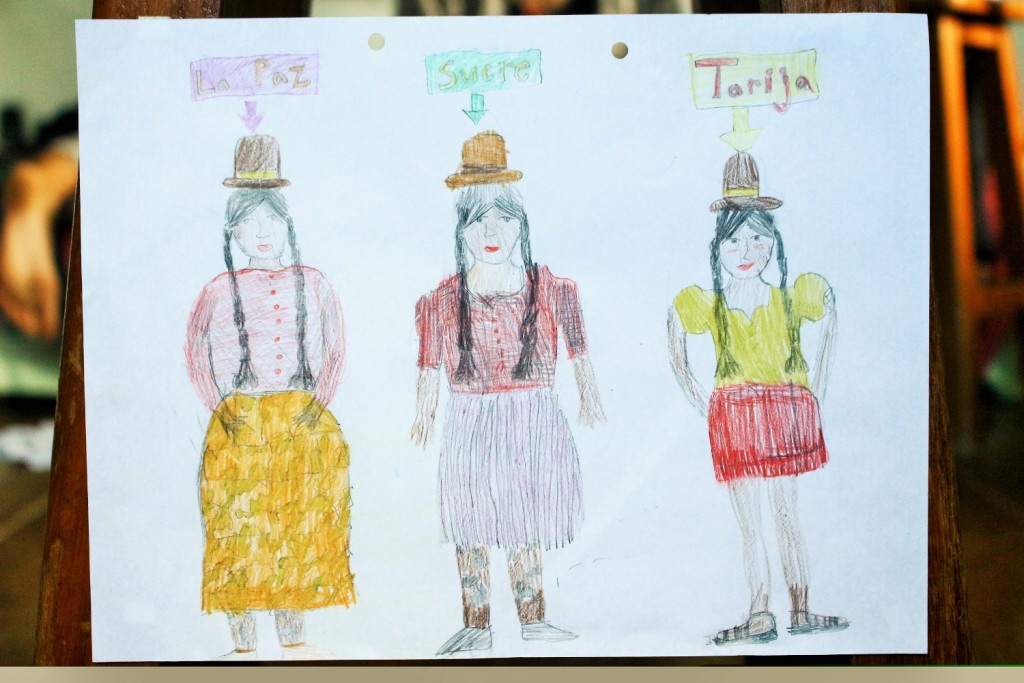
The first thing I noticed in Bolivia was the way most women dressed. It was very interesting for me so I decided to tell you a little bit about it.
Before the Spanish came to the land of Bolivia in 1524, the local women dressed in simple tunics. The Spanish women though were dressed in fancy outfits with puffy skirts, pretty lacy shirts and hats for decoration. Slowly the natives way of dressing changed to what you see on my drawing.
The women often wear a very tall hat, sombrero, that is placed in a way that you can tell that it is a little small and is not meant for the sun. They wear a shirt, la blusa, and a short knitted top, chompa, over it. The shirt is lacy, and has puffy sleeves and the sleeves are also very short and only reach their elbows. The shirt also has buttons like a jacket. Over the shirt they wear an apron which sometimes has patterns on it like stripes or squares. The apron reaches to the end of their skirt.
The skirt, poliera, is pleated and is velvety and soft. It is very puffy. There are two layers and the bottom layer is white and lacy. The top skirt is a lot thicker than the bottom one. Sometimes the women wear alpaca woven leg warmers. They usually have animals knitted on the leg warmers and they look very soft. The women wear sandals, sandales, or flip flops. Also, many carry their babies on their backs, attached with colorful blankets.
Bolivian women are very short. Many times I am a head taller than them! Many women have long jet black braids, trenzas. The braids are so long that they reach to their waists! Some told me my hair was too short! The braids are tied together by a string and at the end of both braids there are heavy black beaded balls as a decoration.
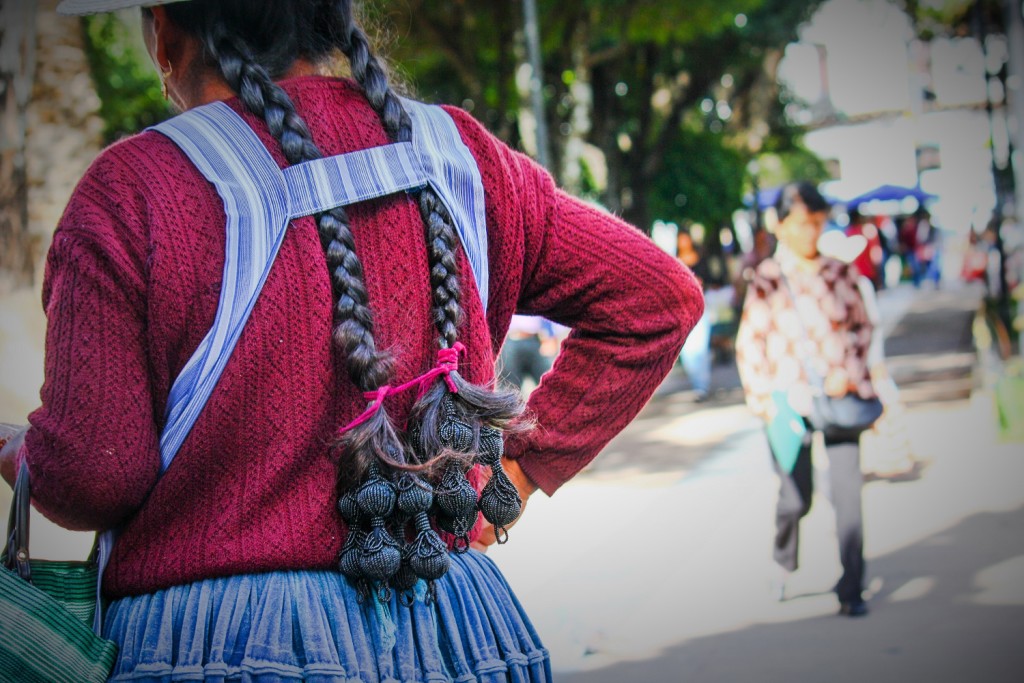
The younger women are not that much taller than the older ones. They have rounded faces and still have the long black braids and the black beaded balls at the end of their them. They often wear a sombrero. The young women usually wear earrings. They have the same lacy shirts with the puffy sleeves. The girls do not wear the aprons, but they often have puffy scarves in bright colors. Their skirts are the same as the older women, but shorter, and they still have the lacy layer of under skirt. Their legs are always bare and they usually wear sandals.
My dad took these photos of women in Tarabuko, Bolivia –
I think their way of dressing is very beautiful and I am surprised they do not wear this dress for special times!
Raina

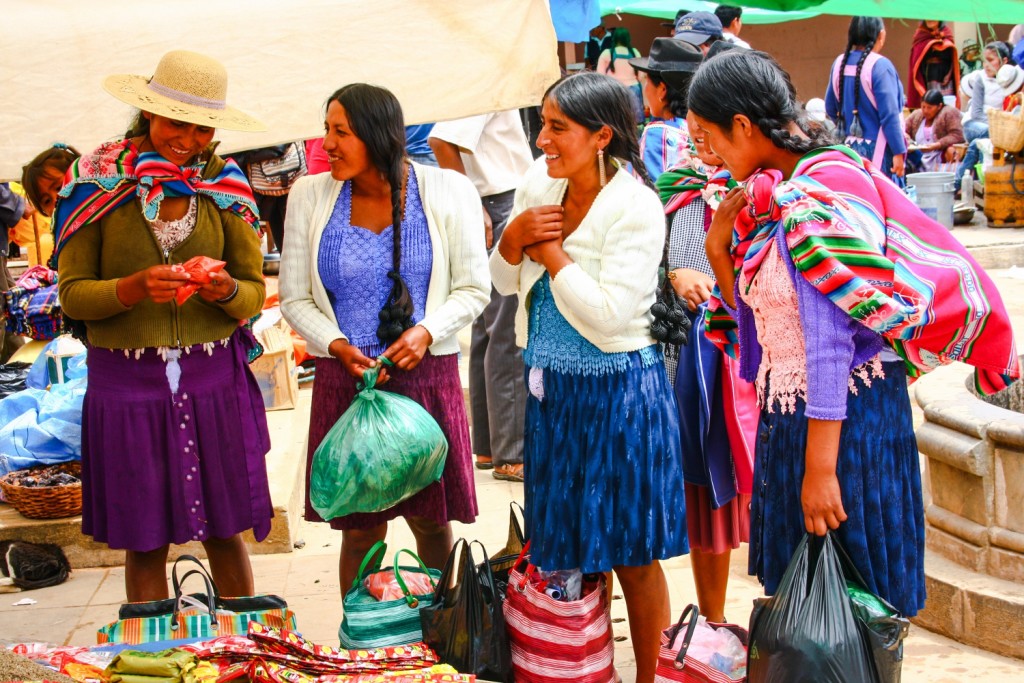
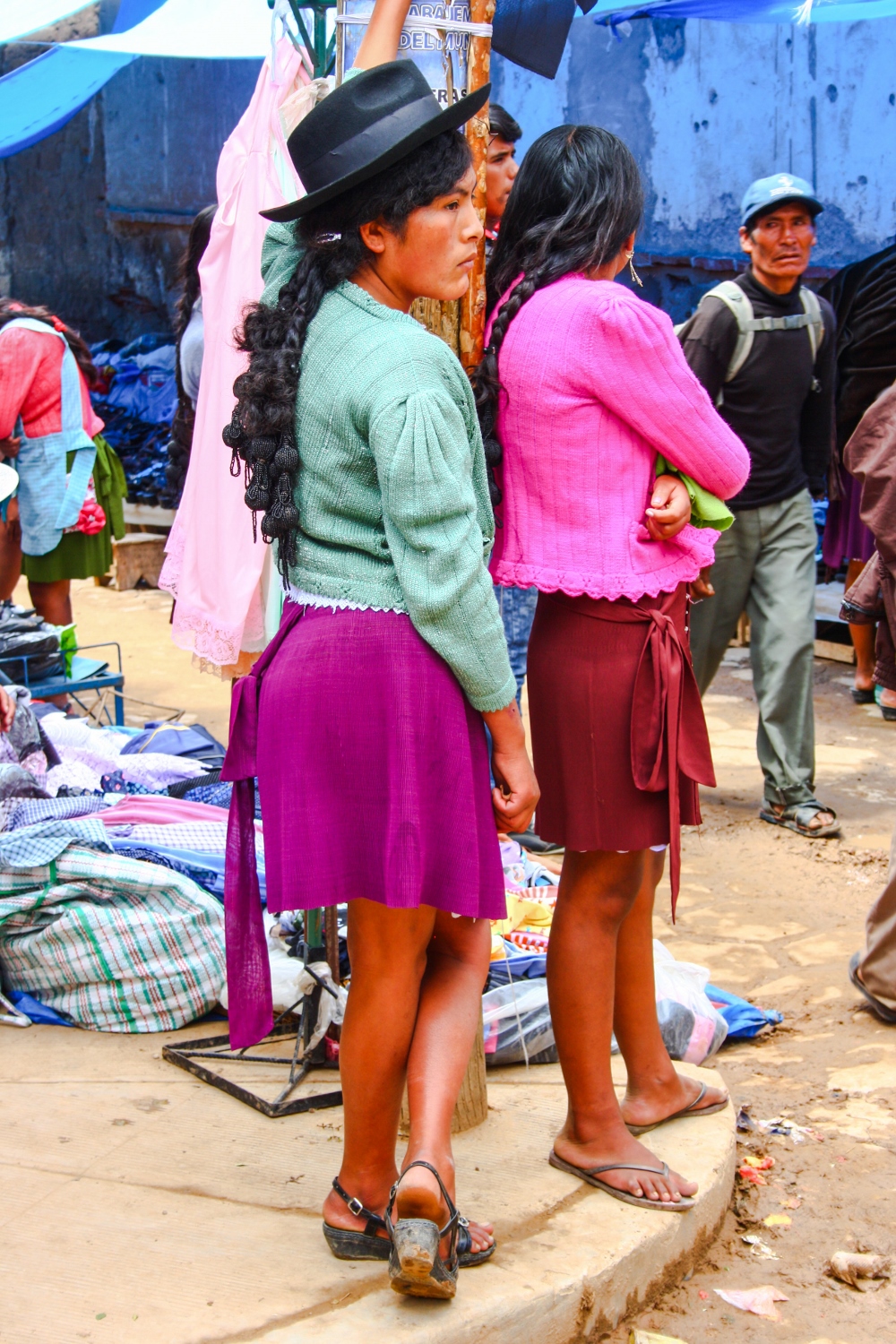
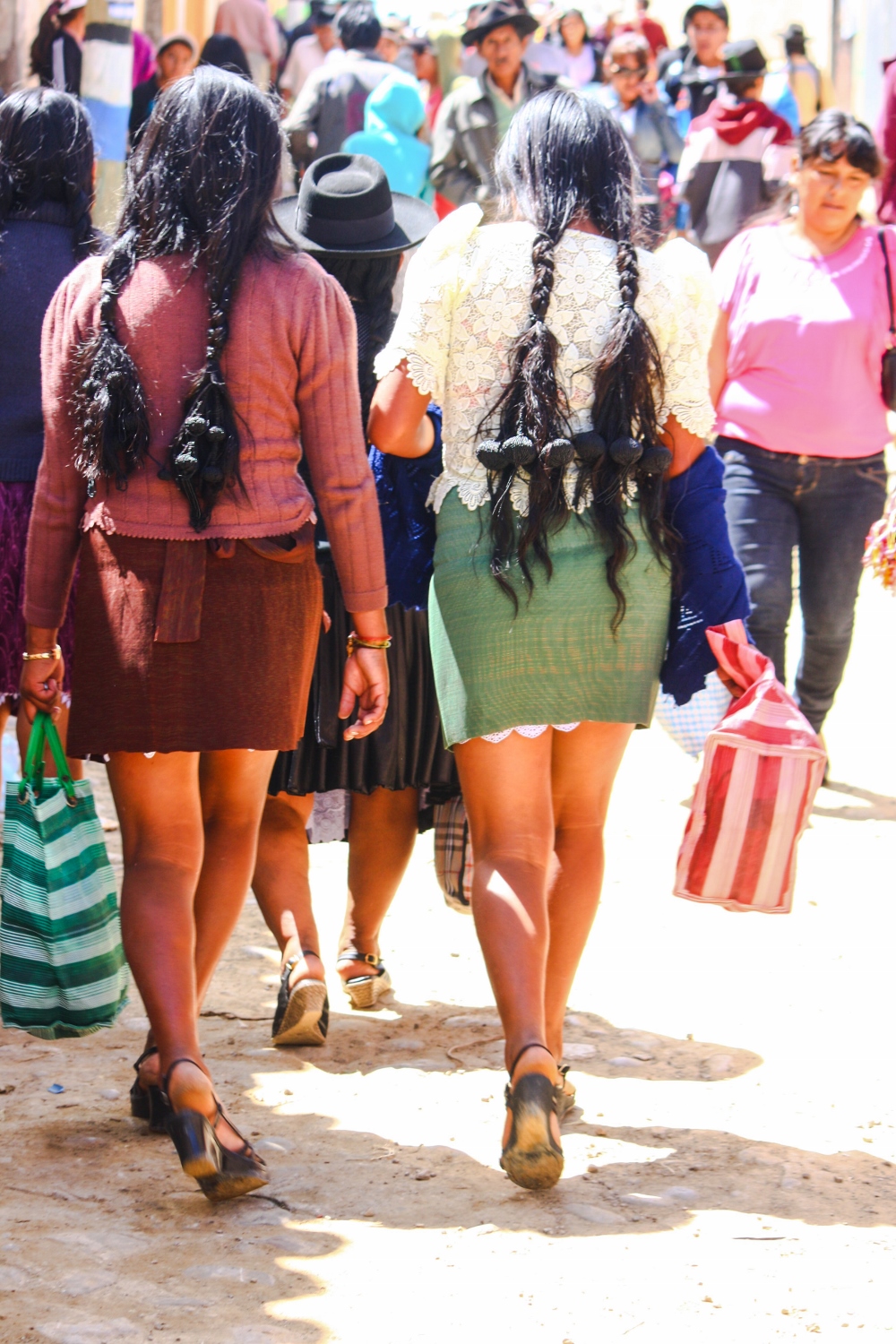
BRAVO NUSHI !!!
MNOGO DOBAR POST !!! Tolkkova dobre si go napisala
vse edno che sme bili sas teb vav Bolivia !!! A i snimkite
na tatinek mnogo dobre ilustrirat tvoiat post….
Bravo na tebe !!! Obichame te ….mnogoooooo
B&D
Благодаря Бабче и Дядо!! обичам ви много! – Райна!!! <3
Nushi,
you are quite the writer!! 🙂 I loved imagining the magnitude of women shorter than you, dressed in magnificent colors and textures! So much more interesting than a country dressed in the same brands and styles mass-produced far-away and without a link to your own cultural heritage. This seems to be one of the rich lessons places like Bolivia can teach us – that we should treasure and promote the links between culture and all of our individual expressions and ways of practical living. I very much encourage you to keep on writing – both you and Borcheto have such a gift for creativity and can touch people’s minds with your inner world! Such an education these months have been for you :-)! keep on journeying and journaling! with love, batko
Batko thank you very much! I will keep on writing every day! I have a journal that my class gave me and i write in it often. We are in Peru right now and in the cities people only dress in normal clothes 🙂 Peru is very different than Bolivia but I still like it! – Raina
Nushi,
i’m sure that Peru compared to parts of Bolivia seems to be faded and worldly, well integrated in the global culture of brands and identities. i’m so glad that you and Boryan are having a chance to experience first hand the richness of traditional cultures, and the delicious tastes of local produce. you will probably have a major culture shock when and IF you visit your Asheville Walmart, 😉 enjoy the adventure, and keep on writing and drawing! we love traveling vicariously through your (and Borche’s) stories and glimpses into such beautiful corners of this planet